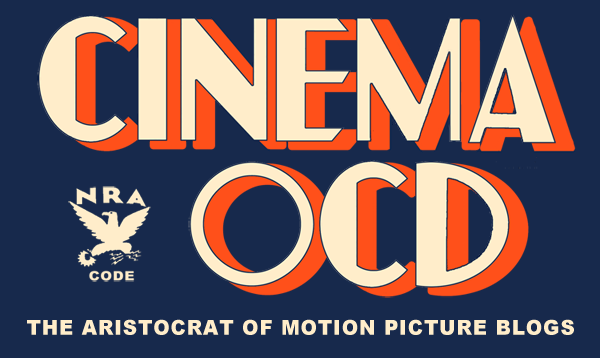 After viewing Roman Holiday several times (and posting about it a lot) I started thinking about how it touched off a whole wave of films of people meeting, and falling in love while on vacation in an exotic locale. Love Affair (1939) pre-dates it, but is a sparse studio filmed production that doesn't have the same big-budget travelogue quality. The year after Roman Holiday, the city was given a full technicolor treatment by Twentieth Century Fox in Three Coins in a Fountain. The story was all-around bigger and brighter than Roman Holiday following the romantic adventures of three young American women (Dorothy McGuire, Jean Peters and Maggie McNamara) and a prince (Louis Jordan), a poor but handsome translator (Rossano Brazzi) and an ex-pat American writer (Clifton Web). Despite a fair amount of drama, this film doesn't quite follow the pattern of the genre in that it doesn't have that bittersweet feeling that inevitably the lovers must part and return home from vacation. Perhaps Fox thought the color and the happy ending could improve on Roman Holiday, but I ask, can you improve on perfection?
After viewing Roman Holiday several times (and posting about it a lot) I started thinking about how it touched off a whole wave of films of people meeting, and falling in love while on vacation in an exotic locale. Love Affair (1939) pre-dates it, but is a sparse studio filmed production that doesn't have the same big-budget travelogue quality. The year after Roman Holiday, the city was given a full technicolor treatment by Twentieth Century Fox in Three Coins in a Fountain. The story was all-around bigger and brighter than Roman Holiday following the romantic adventures of three young American women (Dorothy McGuire, Jean Peters and Maggie McNamara) and a prince (Louis Jordan), a poor but handsome translator (Rossano Brazzi) and an ex-pat American writer (Clifton Web). Despite a fair amount of drama, this film doesn't quite follow the pattern of the genre in that it doesn't have that bittersweet feeling that inevitably the lovers must part and return home from vacation. Perhaps Fox thought the color and the happy ending could improve on Roman Holiday, but I ask, can you improve on perfection?In 1955 two big budget travelogue romances were on offer: Alfred Hitchcock's slight To Catch a Thief which paired Grace Kelly and Cary Grant and David Lean's Summertime with Katharine Hepburn and Rossano Brazzi. For To Catch a Thief, the setting wasn't Italy, but the French Riviera and Grant played the unlikely part of a jewel thief whose gone straight but needs to catch a "copy cat" burglar. The movie is one of the most romantic that Hitchcock ever made and whole sequences are simply elaborate excuses to show the Riviera to best advantage. Whether Francine and John Robie are casing a villa or running from the law down the twisting roads in Monaco (one of which was the very road on which Grace Kelly died in a car crash years later) the whole movie seems like a wonderful excuse to show us pretty scenery. Though it's not one of Hitchcock's best and does lack much in the way of tension and suspense, it has always been a favorite for the unique pairing of Grant and Kelly and the breezy fun. Of course there is the fireworks scene which is just out and out hot.
Curiously enough Summertime also uses a fireworks display to great symbolic and romantic advantage as well. Summertime is the only one of this group of Roman Holiday spin-offs that I would say is as good as that original film. David Lean's camera is in love with Venice and every scene is just beautifully shot and arranged. He makes the heroine an photography enthusiast who spends most of her time trying to capture the perfect moment when the clockwork magi on the piazza San Marco tip their hats to one another. Fans of this film (which apparently include Woody Allen, since a number of scenes in Everyone Says I Love You were filmed in the exact locations as scenes from Summertime) make pilgrimages to Venice in the same way that fans of Roman Holiday visit the locations of that movie. I think that Summertime is the more sophisticated of the two films. It's not nearly as plot-driven and actually reminds me a lot more of the post-modern Before Sunrise/Before Sunset films. Katharine Hepburn is Jane Hudson, a woman who travels alone to Venice and gets involved with a married man (Brazzi). Though the treatment of the subject matter may seem a bit old-fashioned, I think it's dealt with in a way that honest to the time and location. I also was really drawn to the portrait of loneliness that Hepburn creates in the film. I've traveled pretty extensively on my own in Europe and I could definitely relate to many of the situations and feelings she goes through. Jane Hudson gravitates to Renato de Rossi but she is shy and comically awkward around him as well and most of the tension in the film comes from her inability to make up her mind about him. I think my favorite thing about the movie is that they seem like real people in a believable situation. Instead of the typical "meet cute" formula we are given no easy answers. When de Rossi first notices Hudson in the Piazza San Marco he gives her ankles a look of pure carnal desire that I can't remember ever having been directed at Katharine Hepburn before in a movie. She's usually the plucky gal who wins the guy with her moxie and energy, not her legs. That this is a nearly fifty year old Hepburn, makes me even happier somehow. Brazzi made his American acting debut playing opposite June Allyson as Jo March in Little Women, a role that Hepburn had played decades earlier. He has an ageless quality though and when he says he is not a young man, you believe him because he manages to look a bit world weary in much of the movie. He made something of a mini career out of these films appearing in Three Coins in a Fountain, Summertime, Light in the Piazza (1962) and Rome Adventure (1962).
Hollywood continued it's love affair with the Holiday Romance with An Affair to Remember (1957) a remake of Love Affair (1939) which added color, music and more riviera scenery to the melodramatic love story. Though, It's never been my favorite Cary Grant movie, over the years I've come to appreciate the light comedy early in the film and enjoy that bittersweet feeling of parting when the vacation ends and real life begins.
 The genre held out into the 1960s getting a further update with MGM's clever The Yellow Rolls Royce (1964) that manages to cram in more travel and more romance simply by making the story take place over different decades with the car as the constant. While I find the middle Italian adventure between Shirley McClain and her gigilo lover to be maddeningly annoying, it is book-ended by Rex Harrison/Jeane Moreau and Omar Shariff/Ingrid Bergman stories. The latter is particularly delightful as it features Yugoslavia and Shariff in a huge sheepskin coat. There's just something about a guy in fur. On vacation. In a yellow rolls royce.
The genre held out into the 1960s getting a further update with MGM's clever The Yellow Rolls Royce (1964) that manages to cram in more travel and more romance simply by making the story take place over different decades with the car as the constant. While I find the middle Italian adventure between Shirley McClain and her gigilo lover to be maddeningly annoying, it is book-ended by Rex Harrison/Jeane Moreau and Omar Shariff/Ingrid Bergman stories. The latter is particularly delightful as it features Yugoslavia and Shariff in a huge sheepskin coat. There's just something about a guy in fur. On vacation. In a yellow rolls royce.






















